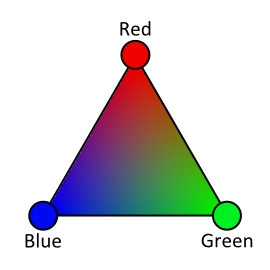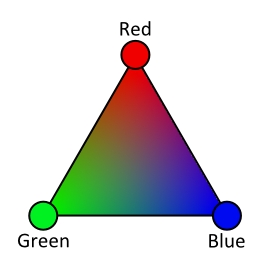User Settings
To change your user settings, when you first open Assimilate, at the bottom left, click on "User Settings".


General
In the View Port of the startup screen, the current user Profile and Account are displayed.
A User Profile is a local Live FX entity that contains user preferences and settings; general user settings and preferences available from the User Settings dialog discussed below, User Preferences specific to a certain module, custom settings for a Surface Panel, and Gallery grades.
A User Account is an online ASSIMILATE account. Using the Sync Profile option you can store certain elements of a User Profile in your online User Account: custom panel settings and Gallery grades. This way you can easily replicate your setup when behind a new Live FX system/computer.
Profiles
In the Profiles option list control at the top of the dialog, you can select one of the available Profiles or create a new profile by selecting the <Create New Profile> option. When selected, you enter the name for the new profile and click the Create button.

In the Account section below the Profile, you can link the Profile with an online Account. Use the Sync button to open the Sync Profile dialog for selecting an online account and synchronizing it with the local settings. The Sync Profile dialog is discussed later in this paragraph. The Clear button will unlink the User Profile and the User Account.
Use the Remove Profile button in the lower left corner to delete a User Profile from the local system. This will not affect the linked online account. Note that you can not rename an existing User Profile. In that case, just create a new profile and delete the original.
Appearance Settings

Scheme
There are three options in the pull-down menu for Scheme:
Color
Mono
Custom
These select the overall color scheme for the UI. Color applies the default color scheme for the UI. Mono changes the UI color scheme to a monochromatic style which creates less intrusion on the eyes while doing color work. Custom allows you to customize the color of individual elements of the UI and modify the overall text size and font for the UI. This is covered in detail in Chapter 11 – Customization.
Color Cursor
This toggle switches the cursor between the standard color style and a monochrome style. This is also useful for minimizing the intrusion on the eyes while doing color work.
Note: Warning and confirmation dialogs still appear in color. Also, other specialized interface elements are not monochromatic since their color appearance is critical to their operation.
Contrast
When using a Custom color scheme, this numerical control adjusts the overall contrast of the UI.
Reset
This resets any changes made to a Custom color scheme back to the default values.
UI Transitions
When switching between the three sections of Live FX -- the Start-up Screen, the Construct, and the Player -- the interface cross-fades to the new section rather than just changing instantly. This makes the transition smoother on the eyes. Disabling this button turns off the fade effect and the interface switches instantaneously to the new section.
UI Animations
This toggle activates the auto-panning mode for the Construct. When this is active, you can click, drag, and release and the Construct will continue to pan as if it has momentum from the ‘push’ you’ve given it. The Construct continues to coast along until you click on the interface or until the beginning or end of the Construct is reached.
Square/Circular Menu
These options control the appearance of the Live FX Command Menu. The Command Menu is a floating, pop-up menu that allows you to navigate between the various menus in the Live FX Player. See Chapter 5 – The Player for more details on the Command Menu.
Slot Mirror Effect
This set the amount of mirror effect on shots at the bottom of the slots in a Construct.
Control Gearing

The next section of the User Menu determines how the Control Gearing behaves in Normal Mode and Shift Mode. These two values determine the sensitivity of the Control Gearing throughout the UI.
Normal
This sets the default increment for all Control Gearing. The value is expressed in terms of a relative percentage.
Shift
This sets the increment for any Control Gearing that is done with the Quick Key: Shift depressed.
Tip: If you want the Quick Key: Shift to decrease sensitivity rather than increase it, you can do so by inverting the two values. The Shift value should be less than the Normal value.
Drag Threshold
This is the time required to hold the mouse button down before a drag action is started as opposed to a regular click action.
Swipe Sensitivity
Set the sensitivity for swipe gestures to toggle UI elements on/off. The sensitivity is the speed with which you swipe the cursor to the edge of the UI to invoke the action. Lower sensitivity means that a higher speed is required. 'Off' means that swiping is not available anymore.
Vector Mode
This specifies the orientation of the Tracker Balls in the COLOR MODULE. Normally the order is:

When Using Vector Mode, this becomes:

Angle
This control enables you to change the angle of the orientation of the Tracker Balls.
Preferences

Proxy size
This setting determines the default size of the proxy images representing the source media in a project. The final proxy image size is related to the resolution of the footage, this setting only sets a base level; small, medium, or large.
Color Format
This pull-down changes how color ranges are expressed within Live FX.The actual bit depth is not changed; it simply alters the value ranges that are displayed within the interface.
8-bit values range from 0 to 255
10-bit values range from 0 to 1023
16-bit values range from 0 to 65535
0.0-1.0 values range from 0.0 to 1.0
No Bottom Swipe
Enabling this setting will disable the cursor bottom swipe function which hides the menu panel and switches the shot being played to full-screen mode. This way you can prevent any accidental resizing of the Player. You will still be able to switch to full-screen mode by using the quick keys, and once in full-screen mode, the bottom swipe of the cursor will work to bring back the menu panel again.
Save
There are two options for saving: Automatic and Manual. When set to Automatic, Live FX automatically saves all changes made whenever navigating between different Constructs, moving between a Construct and the Player (or vice versa), and when exiting a Project.
Both when set to Automatic or Manual, you can manually initiate a save at any time by using the Save All button or the Quick Key: Ctrl S.
When set to Manual, Live FX will ask if changes should be saved or not when exiting a Project by displaying a dialog panel:

Audio Set Sync
When playing back footage, Live FX automatically switches the Sync Mode of the Player to the most logical option, based on the system configuration. For example, if SDI output is present, the Player defaults to using VIDEO as the Sync Mode. There may be times when this automatic selection is not what is desired.
This option forces the Player’s Sync Mode to Audio when you start playback, rather than automatically switching Sync Modes. This is useful for ensuring that playback always remains in sync with your audio. See Chapter 5 – The Player for more details on the Player’s Sync Modes.
Tooltips
Enable / Disable the display of Tooltips.
Allow Delete Shot
Normally, you cannot delete source media from within Live FX. The Delete Media button in the Construct only deletes media that has been generated by Live FX, such as cache files. This is done as a precaution so that users can trust that no matter what, their original source media will remain intact.
However, there are some instances where being able to delete source media from within Live FX could be useful. Enabling Allow Delete Shot replaces the normal BIN MEDIA button with BIN MEDIA & REF. This allows you to delete not only media that Live FX has created but also the original reference (source) media.
Note: Because the ALLOW BIN SHOT option is so potentially destructive, it is not persistent between sessions. Once you exit from a Project, you must go to the User Settings Menu and enable ALLOW BIN SHOT again if you want to use it when entering another Project.
Snap Shot Settings

Destination Folder
This Text Slate determines where Snapshots are stored on the filesystem. By default, the path is set to the current Project’s folder and a sub-folder called SnapShot. An absolute path can be specified using the SET button.
Format
This chooses between JPEG and TIFF image formats for the resulting Snapshots.
Sync User Profile
Through this panel, you can synchronize your local user settings, custom panel mappings, and gallery grades with your online account.

Click the Sync button to start the synchronization process. Make sure you entered the credentials for your online User Account. Use the Mem option to let Live FX store the credentials for future sync actions.
ADVANCED

The Advanced option shows additional options for the synchronization process.
Slave Mode
When enabled the Sync process will only download items to the local profile but not upload any (new) items to the online version.
Clear Local Settings
Remove all local gallery items. The online version remains untouched.
Last updated